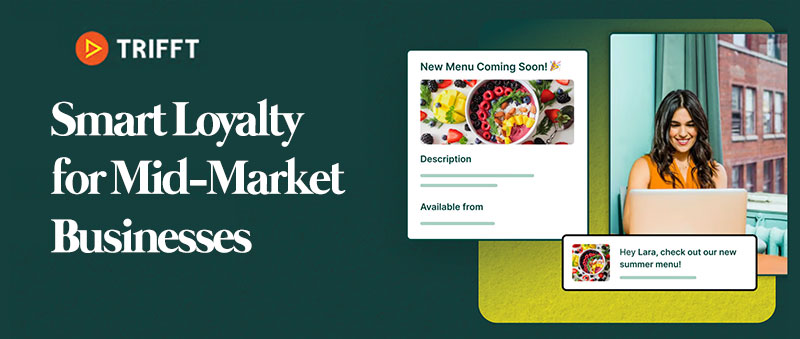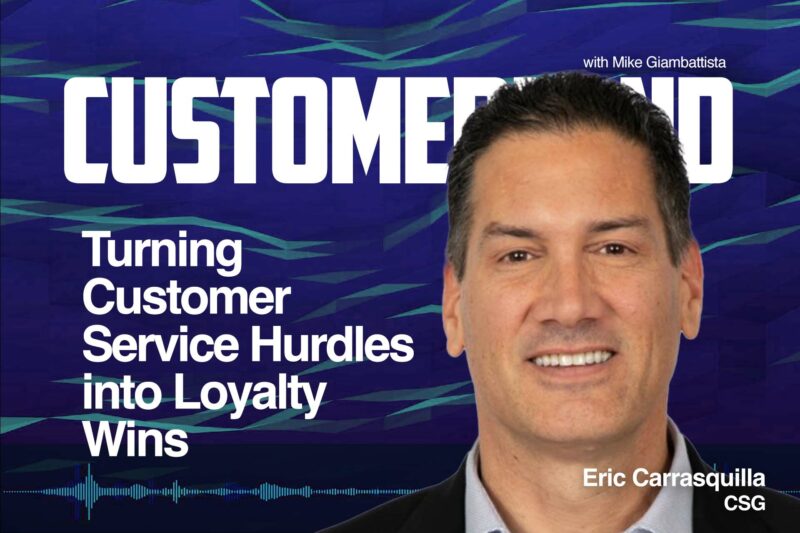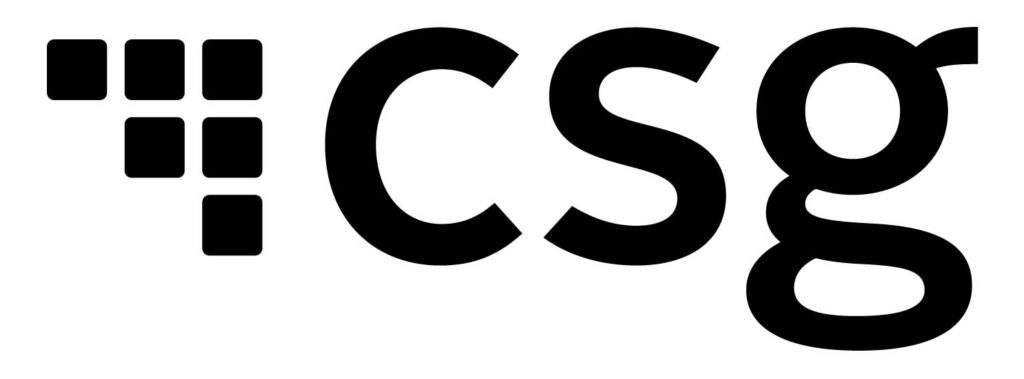Eric Carrasquilla, EVP and Division President of Customer Experience Solutions at CSG, shares insights into improving customer service. This discussion will explore how businesses can enhance customer engagement and turn challenges into opportunities for building loyalty. CSG’s platform focuses on journey analytics, real-time decisioning, and digital communication tools across various industries, from telecommunications to healthcare. The session aims to provide practical strategies for improving customer interactions, particularly in a challenging economic environment.
The future of advertising without third-party cookies is also examined. We will look into how ads can remain effective and precise using first-party data, referencing examples like Amazon’s targeted recommendations. With the shift away from invasive tracking, the importance of context in advertising is highlighted, promoting customer engagement while respecting privacy. The talk will cover how to maintain a relevant and respectful connection with customers in a changing digital landscape, where technologies like generative AI are emerging.
This episode of Customerland is sponsored by

Read the full transcript of this episode below
Eric Carrasquilla
I was like, wow, this was amazing, absolutely amazing, turned from something that was a bad thing about a flight cancel to something that I haven’t stopped raving about. Now, a couple years later, I talked to folks in United and was working at a company in the customer experience space and I said why are you even talking to us? You guys obviously have this nailed down and it was wonderful. And they said, let me guess, global services right, we’re just like the top, top, top tier within United. And they said look, by hook or by crook manually, we got you guys sorted. You are not the problem. The problem is all of the rest of the customer base within United. How do we make them feel the same way or, if not, the same way, how do we turn that friction into a positive experience?
Mike Giambattista
I’m honored today to be talking to Eric Carrasquilla, who is EVP and division president of customer experience solutions at CSG, which is a really long title. But first of all, Eric, thanks for joining me. I really appreciate it. I love it when you get to talk to well you and your colleagues over there, because there’s always a lot going on. But just for the sake of context, for those who may not know, can you tell us a little bit about what you do at CSG and maybe, more broadly, what CSG is all about?
Eric Carrasquilla
Sure, so CSG is a public company that provides software and services to help companies connect with customers and monetize those relationships. If you look at the area that I focus within CSG, and we call it customer experience, which means everything and nothing, it’s around the connecting with customers part of things. And so you mentioned like, hey man, you got a long title. What does that mean? What it basically means is why I’m at CSG and my mission in life is around helping companies be easier to do business with digitally, and that’s really important to them because they want to drive growth and loyalty disproportionately in those channels and in a lot of cases they can’t do that currently because either the channel isn’t there or if it’s there, it’s not connected or it’s a bad experience.
So this is one reason why that’s important to them. The other reason is that they want to be more agile and how they connect the dots with all of the data that they have internally to drive better experiences with customers. So, again, no problem isn’t that they don’t have the data, it’s just that they can’t see the force for the trees and connect the dots or whatever the analogy is. And then the last piece, especially now, given the environment that we’re in is they want to be able to do all of those things I just mentioned, but in a constrained financial environment. So do more with less kind of a thing. So that’s why I’m here within CSG, providing software to help companies be easier to do business with digitally, and that’s why it’s important to them.
Mike Giambattista
So that’s a big remit. That’s a lot of stuff that you’re trying to do. Can you, without getting too deep into the technological weeds, can you talk a little bit about some of the technologies that CSG provides to facilitate those goals?
Eric Carrasquilla
Yeah. So think of it. So we provide a platform and think of that platform like a stool that’s got three legs. One of the legs has to do with customer and journey analytics and insight. So, for example, within Synchrony Financial, we help them figure out, if you’re going to reach out and engage a customer, who are the ones that are the best to reach out, to what time of day should you go, hit them up that they’ll actually open up the communication, and what’s the best method to do so. So one of those legs is around analytics.
The second leg is around what people would call either personalization or real-time decisioning. So, mike, from your, let’s say, from Comcast, you bought an HBO Max subscription and it’s for six months free, and then there’s a charge behind it, but at the end of that six months you forgot that you weren’t paying for it one way or the other. And then you look at your bill and you go what is this? So the decisioning to be able to go through and say Mike is a subscriber, he falls in this particular category, he’s coming up and rolling off a promotion. Here’s the triggers to help Mike understand what’s going on and to go through and retain him that block of real-time decisioning.
There’s a third block around digital communication. So if you’ve ever gone into a CVS or to get a vaccine or to a prescription reminder and that sort of digital touch, point out to Mike. We provide software for that as well. So for some of our customers they’re using one leg of the stool. For some of our customers they’re using multiple legs, but they’re all trying to do the same thing, which is be easier to do business with digitally Interesting.
Mike Giambattista
I know in some of the prior conversations I’ve had with your colleagues over there one of the verticals that you focus a lot of attention into is telcos and cell providers and kind of even the ancillary industries around that. What are some of the other industries where CSG is focusing?
Eric Carrasquilla
Yeah. So there’s a number of different industries we look at. There’s four primary ones that we deliver a lot of value on. One is telecom and kind of communication, media and technology that cluster. Another one is financial services, so retail banks, credit card companies, mortgage lenders. Another one is around healthcare providers and then another one being wait, telecom, financial services, healthcare provider and retailers. Those are the main ones that we focus on, and the reason we focus on those areas is there’s a few common characteristics in its steel thread, so to speak.
One they’ve got tons of customers. It’s not a company making bulldozers that they might have a few hundred customers. They’ve got hundreds of thousands of millions or tens of millions of customers. Number two they’re connecting with their customers across multiple channels Phone, web, mobile application messaging, and doing air traffic control across those different areas is a difficult thing. The third piece is that customer lifetime value and retention and trying to get into some sort of recurring relationship is a really big deal for those companies. So if you’ve only got two customers, you’ve only got one channel that you deal with and you can care less about a longer term relationship with your customer. We’re overkill. If you care about those three things, we can do some pretty special things for you.
Mike Giambattista
So what we really wanted to talk about is none of this, although it’s really interesting. I think it’s vital. But one other question before we kind of move on to another topic within those industries, the companies that you’re dealing with, who would you say are your key client groups? I guess what I mean. Are you kind of more with the ways you provide your technology? Are you more focused on, say, hr? Or if there’s a CX division, is it a CX thing or is it mostly CRM, cdp extension, or how does it really work internally? I mean, who are you talking to?
Eric Carrasquilla
Very good question. So let’s think about how somebody would reach out and touch one of their customers. Think of it like a pie and there’s different slices that are different groups. If you look at the reach out and touch the customers in the beginning of the relationship kind of the discovery and acquisition, and on the marketing front, we have folks that we deal with in marketing teams, CMO and derivative digital teams underneath. If you look at the rest of it, which is once we’ve gone through and we have a relationship with that customer and all of the rest of the pieces, it could be somebody within the hair part of the organization that’s trying to decrease call volumes or have them be more in the digital channel or, when they get in the physical channel, make them shorter so the customer gets what they want.
It could be people that fall in what they would call the digital category, which means everything and nothing. But what it’s referring to is non-marketing stuff, the rest of how you engage and retain and kind of go through and do those touch points. Sometimes it’s dealing with the IT organization, but the vast majority of it is kind of the past acquisition parts of the pie where they say, hey, we’ve got, you know, five, ten years ago we put something in place to connect on a channel in the marketing side of things. Now our big problem is how do we do the rest of it, where everything like falls out and then dumps out into a call center or physical channel? How can you help us stitch that up? Thank you, Gotcha.
Mike Giambattista
So you’ve got another five or six questions that I really dying to ask you on just kind of the mechanics and how you kind of assist with some of these strategies. But I’m going to make a real effort to get us back on the original focus for this conversation. But all that to say that if we can schedule a follow up, I think it’d be really interesting because there’s a big contingent of our readership and listenership that operates in the CX customer success space and these are all major hurdles for major companies and you guys solve for some of it.
Eric Carrasquilla
So yeah, just one quick comment. I didn’t mention the CX teams, but obviously the CX teams. The reason I didn’t is because when you go through with who is solving these problems, sometimes they’re called CX. There’s another dozen things that they’re called, but all of them are focused on hey, we want to do more stuff digitally. How can you help us with that? Connect dots, make better decisions more quickly and reach out. So, yeah, more than happy to follow up with you on that.
Mike Giambattista
So we’ll have our people talk to your people. So the stated reason for this conversation was something that I got an email, maybe I don’t know two weeks ago. Eric and his colleagues boldly have come out with some predictions for 2024. So a little disclaimer, we’re having a little fun with that. But you know, this is the season for predictions. Everybody’s got them and you know, to be really fair, like there’s a lot of them that just aren’t worth reading. They’re just like come on, really I had to put something out at the end of the year to make it look like I’m looking ahead, so we try not to pay attention to that. On the other hand, this is pretty meaty stuff and I think it’s worth talking about. So I’m just going to run through these item by item and you can expand. How about that? Yep Item number one in 2024, friction should be viewed as an opportunity, not a bad word. I’m in love with that concept. I’ve been kind of echoing that for a while, but maybe this is the breakout year when people start agreeing with me.
Eric Carrasquilla
Yeah, I. The top experience that I’ve had as a consumer which I haven’t shut up about over the last 10 years was a friction related experience with United and it was an opportunity where they completely screwed something up and turned it into something wonderful. I haven’t stopped talking about short version. I’m on an international flight connects on the East Coast. Flight got canceled, big problem because of the meeting the next day and as I’m really upset sitting on plastic furniture in Newark airport at midnight, walk back to the lounge. Someone comes out from behind the counter in the lounge and says Mr Carrasquilla, and you know, my last name is poorly, it’s tough to get right. I’m like how did they know how to pronounce my name? Holding out something in front of them and it’s a card. And they said look, we’re really sorry, we have you checked in at a local hotel. There’s a car outside, they’re going to take you to the hotel and I just clicked in the door. I didn’t have to go up to the front, stayed over, came back in the next day. Person in the lounge apologizes to me again. When I get on the plane, flight attendant apologizes to me. They have the pilot come out and apologize to me and got to my destination. When I landed, get a text hey again, apology, here’s a gift. I was like, wow, this was amazing, absolutely amazing. Turned from something that was a bad thing about a flight canceled to something that I haven’t stopped raving about.
Now, a couple years later, I talked to folks in United and was working at a company in the customer experience space and I said why are you even talking to us? You guys obviously have this nailed down and it was wonderful. And they said let me guess, global services right, which is like the top, top, top tier within United. And they said look, by hooker, by crook, manually, we got you guys sorted. You are not the problem. The problem is all of the rest of the customer base within United.
How do we make them feel the same way? Or, if not the same way, how do we turn that friction into a positive experience? So how do you go through and do that One? You have analytics or some sort of way of tracking the breadcrumbs of where are those hotspots? I see too many companies go through and patting themselves on the back with CSAT scores and NPS For checking in and getting through security, for how you went and boarded the flight, for what the experience was like in the plane for deplaning for when you’re booking a next ticket. How do you go through and break that down? So I think when you break that down and find those hotspots, that’s really an opportunity to go through and surprise and delight customers and I don’t think we’re doing enough of it.
Mike Giambattista
So I don’t think there are many CX professionals, or whatever you would like to call them, that would disagree with that. I mean, that’s a, I would say, kind of common sense. It’s an opportunity. It’s presented, you can do something about it. If you can figure out how to do that at scale, why do you think that 2024 is going to be the year that companies start to get that?
Eric Carrasquilla
I think because one, a lot of the other fires, and I mentioned the hey, how do we target people to go through and do a campaign? That’s been solved. Like a lot of the easier digitization pieces have been solved. So, budget, mind share, people, it’s available to tackle this problem. Number one. Number two having options where it’s not just hey, we looked at some analytics stuff, then into, hey, it’s not just that we took a decision and hey, it’s not just that we went through and I sent a text out to Mike, but platforms where you can do all three things. That’s where you can really do something about that friction point.
Up until now, a lot of it is well, you know, our data team looked at something and they came up with some really cool reports but nobody did anything with them. Like, three people looked at it but nobody did anything. Or we made a decision that, hey, you know what, we could reach out to Mike, but I can’t reach out to Mike, or we sent and the dots haven’t connected. I think that’s one of the big reasons why Availability of the technology and also mind share and bandwidth to do so.
Trifft is Smart Loyalty

As of today there are 1237 technologies on G2 listed as Loyalty platforms. There are 560 loyalty technologies on Capterra. My question is – how do you navigate all that?
The answer – if you’re an enterprise-level user – is that there are a handful of organizations out there that are happy to help you figure that out. But if you’re a mid-market user … well, good luck.
There’s a massive pool of options, features, integrations, stack-dependencies and complications – an almost innumerable amount of stuff to sort through just to arrive at some sort of short list.
That was the thinking behind Trifft. Trifft – T R I F F T is a smart loyalty platform designed from the ground up to provide mid-market retail and restaurant operators with a full-featured yet easy to use loyalty solution.
It was built by a team of loyalty veterans who saw that while platform sales were going up, usage and adoption were stagnant because the technologies were: too complicated, had too many features, needed too much manpower, required too much IT input, etc., etc., etc.
Trifft’s entire reason for being is to help mid-market businesses deliver on their complex loyalty strategies without the tech bloat that so often accompanies such things.
That’s Trifft. Smart Loyalty. Trifft. T R I F F T. I O
Eric Carrasquilla
They are. So last year about this time we were having a meeting with our advisory board and I’m sure you can remember I can’t think of something that’s taken off as quickly as GenAI in my entire career on the technology side of things.
I don’t think there has been. Now, when you go look through and people that have been involved in that area, they’ll be rolling their eyes going Mike and Eric, we’ve been doing this for the last you know AI for the last 20 years and we’ve been building these mallets. You guys just didn’t see it until chat GPT, chat GPT blew up. So when we were having these discussions with advisory board members, we said you know one, do you know what this is? Two, how are you using this internally now and what are your plans to do so? Going forward, every single one of them. Every single one of them was already doing something with it and, by the way, we were doing stuff with it, but it fell into this category of not realizing how we started within.
It was not some great idea that came down from the mountaintop. It was grassroots things of people dropping credit cards down to go through and get access to large language model and starting to play and iterate and saying what if we did this? What if we did that? The first use cases that they were walking through had nothing to do with customer experience, but they were using it to write job descriptions. They were using it for presentations. They were using it for less obvious ways. That then opened up Art of the Possible on. You know what we could do this to help us be easier to do business with digitally and all the stuff that I was rambling about before. So then we asked them okay, in the customer experience space, where are you at with them? And 90% of them said they were going to be doing something in the next 6, 12 months. Now we’ve already seen now that’s at 110%, not just advisory board, but I defy you to find a company that’s not doing something within that area. I really, truly believe that in the customer experience space, this is the biggest game changer we have seen or that we will ever see within our lifetimes. Think about it. So you know, one of the things that we end up providing around this is something that we call Bill Explainer, and I’m just giving you an example of how this works.
So I don’t know about you, but I rarely read my bill and if I’m reading my bill, if there’s an anomaly where I’m paying more, I’m heated at that point and I want to understand what’s going on. Worst case scenario I think they’re trying sorry. Best case scenario I think they’re trying to pull something over on me. Worst case scenario I do something about it and I churn and I get out of there, and so these bills. It’s very difficult to understand what’s going on. It’s 20 pages of legalese and contract information and the rest of it. But being able to go through and feed that into something like ChatGPT and give you the cliff notes version of hey, mike, look it’s this. Remember you guys went on vacation to Croatia and you know your son blew through his data cap because he was watching Netflix and whatever else. That’s why it’s 20% of sorry, it’s $20 up now. It’s a one-time fee, it’ll go back down. Here’s how next time you can avoid that, we can put caps in. There’s a, you know, a toggle in your mobile app where you can put data caps in on him, et cetera. So that piece how was that? How did you get that solved? Before Fying up somebody within a call center dealing with a physical channel which is very expensive, frustrates the customer, frustrates the company, as they’re spending time and these calls are not short, they’re much longer.
And then there’s a sentiment issue that you’re dealing with, et cetera. The impact on call centers alone like, if you look at it, for most subscription industries, 60, 70% of their calls are around billing and account related information. It’s a huge impact, huge, huge impact, and that’s just. That’s just one small use case. There’s a ton of other ones. What I love about it is, once these initial use cases come out and people are going through and getting value around them, just like the people doing the job descriptions and the other kind of like HR stuff. With generative AI, there’s a whole other crop of stuff that’s going to come that we haven’t even seen yet. So, yeah, I think there’s a lot of cases where somebody will see a technology it’s like, oh, augmented reality or blockchain or whatever else where they get over their skis on adoption. I think we missed it on generative AI and it’s going to be even bigger than we see right now.
Mike Giambattista
I heard it described this way. I’m going to try and remember the language, because it was perfect. They equated where we are with gen AI, as to when the first ads came out on the first televisions and you had the dancing cigarette box and it was just the cool thing you could do with an image and people started going, wow, that’s really neat. And then you know, whereas technology and you know, visual TV ads the holy, where’s that taken? A sense, the idea behind that is that we’re just really at the very beginning of playing around with what this could ultimately do.
Eric Carrasquilla
Yeah, like even looking at PCs when it starts like why would you want a computer in your house, like recipes, like what’s, and then just where? Now? That cycle was much longer than what we’re seeing with generative AI, but I think there’s so much cool stuff that’s being used now and then over the horizon.
Mike Giambattista
Yeah, it’s massive and super interesting. The last one is the is the one that I think we should be talking about the most, but we probably won’t, because we both are sure I’m time here, but everything will be an ad network.
Eric Carrasquilla
Yeah, I think, especially with what some of the things that Apple and Google are doing with cookies and how easy or not easy it’s going to be to be able to use third party data, I think it’s going to force companies to be a lot more creative with how they use first party data and how they use context in the ads that they serve and then where those ads are served.
So, to horribly oversimplify the cookie issue, a lot of the ads that would get popped up when you were online, you could you know these digital breadcrumbs that you would drag along with you, whether you realized it or not. That would get sold. Other companies would get access to it and they could say look, I’m looking for a male that’s 22 years old, with blue hair, that lives in California, that likes to serve. That is as explicit as you would want to go through and get. That’s going to go away. So I think internally, if for nothing other than privacy regulations and just customers getting more savvy that that free game on your phone. You are the product and they’re selling your information.
So, on the first party data front, this is things like your billing information or your customer information, things that a Comcast or a CVS or a case that somebody else has and you know they have. There’s a lot that you can pull from that. That example I gave you earlier, mike, about hey, you’re rolling off a promotion and how do we prevent the stock and prevent you from turning and being able to serve ads based on that? So quick story related to Amazon Prime. So I’m not a huge fan of spam or whatever else. I get all these emails and stuff. I don’t want to hear it. I don’t want to listen to it.
When I signed up to be a Prime customer, they sent me something and an ad popped up that was personalized I don’t want to use the word hyper personalization because I think it’s overloaded but very specific to me. That said, I’m going to paraphrase hey, genius, you think Prime is too much for 99 bucks. You realize you paid $200 and something in the last year on late charges because you can’t get your act together and get your mom something, or your brother, your kids or whatever else, and I was like, oh wow, I didn’t know that this is really. Thank you for sending this to me. Actually, why didn’t you send this to me before?
Using that first party data and very personalized is something that’s going to be very, very, I think, the key, especially with what’s going on with cookies.
The other piece, as to where those ads are served and we gave examples of stuff in an Uber, stuff on an app, stuff on a kiosk, a lot of that because either you can’t have the third party data or you’re not a customer yet, so we don’t have all your billing and subscription information a lot more intelligence from the context of what page you’re on, what you actually clicked on, and being able to bring up something like that anonymously. So I think when the whole cookie issue happened, or getting rid of the third party cookies, I think a lot of people got very nervous. But it’s not the end of the world. There’s ways to go through and do that in a way that respects privacy and the relationship with the customer, in a way that’s value add for them very much. The example that I gave around Prime that was a good thing for me. I’m saving money Well, with how much I order on Amazon, you could potentially save money.
Whether or not I’m saving money, but I think you get the point.













